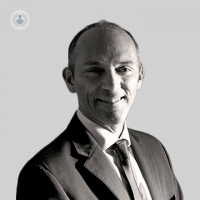Epilepsy – the 6 types of seizures
Written in association with:Epilepsy is a neurological disorder affecting 1 in 100 people in the UK, and it is characterised by seizures. Seizures, put simply, occur when there is abnormal electrical brain activity interrupting the normal functioning of the brain. When someone has a seizure, they may jerk around, become stiff and sometimes they may be unaware of the seizure they are having. Mr Richard Selway of the London Neurosurgery Partnership is one of the best epilepsy specialists in the UK. Here he gives us a run-down of what epilepsy is and the different types of seizures that can be had.

Epilepsy causes:
We don’t know the exact cause of epilepsy, and generally, there is no single identifiable cause. We do know that epilepsy can run in families and be inherited. We also know that other causes are brain-related, including brain tumours, brain injuries, substance abuse, infection or stroke.
Epilepsy symptoms:
Symptoms will be different in each patient, but common ones are:
- Uncontrolled jerking and shaking
- Collapsing
- Staring blankly
- Losing consciousness
- Strange, tingling sensation prior to a seizure
In fact, seizures are the key symptom of epilepsy, but generalised seizures are actually categorised into six different subtypes.
1. Tonic seizures
If someone has a tonic seizure, typically their limbs stiffen and their arms raise upwards. If they are stood up, they may collapse to the floor or fall backwards. Unlike other seizures, there are no jerky movements, but instead, the person is totally unconscious during the seizure which lasts for approximately one minute.
2. Clonic seizures
These are characterised by rhythmic, jerky limb movements, for which the person is unaware of. They can last from 10 seconds to 2 minutes.
3. Tonic clonic seizures
These occur in two separate phases because both sides of the brain are affected. Firstly, the tonic phase consists of losing consciousness, stiffened muscles, collapsing, tongue biting and groaning or crying sounds. Next, in the clonic phase, it consists of jerky limb movements and loss of bladder or bowel control. These will last from 1-3 minutes.
4. Atonic seizures
These are also known as drop seizures and are characterised by a loss of all motor functions with the muscles going limp. The patient would collapse to the floor, which risks injury. These seizures are brief, lasting just a few seconds.
5. Absence seizures
These used to be known as petit mal seizures, and consist of an unconscious daydreaming episode. Typically, the patient will be staring into space, their eyes glazed over with blinking, looking as though they are not listening. There may also be subtle jerking movements. Absence seizures can start in childhood but are often not diagnosed because they are attributed to a child not listening or paying attention.
Read more: Epilepsy in children
6. Myoclonic seizures
Sometimes these are not noticeable and only last a few seconds, causing symptoms of jerky muscle movements. Whilst they are brief, they can vary in strength, sometimes causing the patient to fall over. Patients remain conscious for a myoclonic seizure.
Read more: Diagnosing epilepsy
Epilepsy treatment:
- Anti-epileptic medications
- Vagus-nerve stimulation (VNS)
- Deep brain stimulation (DBS)
- Surgery
Surgical intervention is only considered if the patient’s epilepsy is extremely severe. To have epilepsy surgery, the patient must have an EEG scan, brain scans and memory testing. These tests help to ensure that the best outcome of epilepsy management for the patient is reached.
You can make an appointment with Mr Richard Selway and the team at the London Neurosurgery Partnership here.


